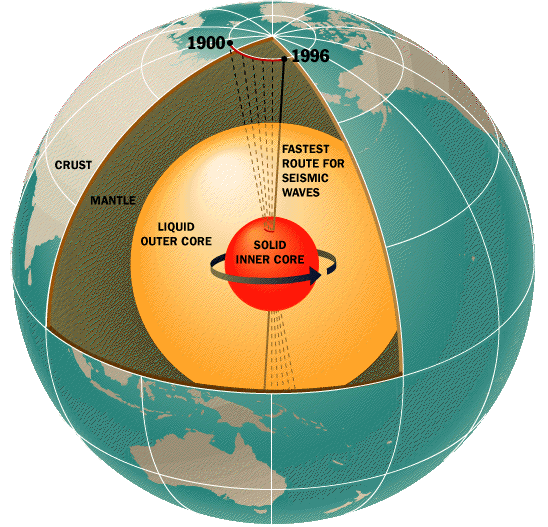Bridgmanite: Earth's Most Abundant Mineral That You Never Knew Existed

It makes up 38% of Earth's volume, yet scientists have only just been able to give the planet's most abundant mineral a name.
Bridgmanite – or (Mg,Fe)SiO3 – has finally been characterised and named after years of work attempting to understand it. First announced in June, researchers have now published their findings in the journal Science.
Scientists had been unable to name the mineral for decades because they could not find a naturally occurring specimen of bridgmanite – a high density magnesium iron silicate.
"The discovery concludes a half century of efforts to find, identify, and characterise a natural specimen of this important mineral," the authors write. The mineral influences mass and heat flow deep within the planet and its discovery will aid our understanding of the structure and dynamics of the Earth's interior.
Bridgmanite was eventually discovered in a meteorite that fell in Australia in 1879. 'Shocked meteorites' are exposed to high pressures and temperatures normally only found deep in our planet's mantle.
Originally known as perovskite, two previous reports showed the mineral can be formed in shocked meteorites, meaning they can provide examples of mantle minerals normally inaccessible. Unfortunately, both previous cases involved perovskite that was damaged during analysis, meaning it could not be characterised.
Study author Oliver Tschauner, from the University of Nevada, Las Vegas, and colleagues have now discovered and isolated the mineral in a meteorite, meaning they were able to name it and submit it to the Commission on New Minerals, Nomenclature and Classification (CNMNC).
In an interview with IBTimes UK, Tschauner explained they named the mineral for Nobel Laureate Percy Bridgman, who "pioneered the field of experimental research at high pressure" and made contributions to physics, chemistry and geoscience.

"A week before my colleagues and I submitted the proposal of bridgmanite as a new mineral ... there was a public debate on the Mineralogical Society of America's talk list about the possible name of this important mineral. People did not know that we found it. We quietly followed the discussion, which was much in favour of the name 'bridgmanite'."
Explaining why meteorites were targeted for bridgmanite, he said the mineral could not be found in Earth's mantle because anything that could have originated this deep down and been brought up to the surface would have transformed into other minerals because of pressure differences.
"In meteorites, high pressures and temperatures are generated by shock waves, and the release from these conditions is rapid. Thus, people realised they may find bridgmanite in meteorites.
"Previous attempts used electron diffraction because it can be combined with electronmicroscopy. However, bridgmanite vitrifies in the electron beam. Hence, the few reported patterns were insufficient for a proper structural and chemical analysis of this mineral."
Instead, the team use a different type of X-ray beam that is micro-focused on the sample, providing quantifiable structural information – and realised they had found the elusive mineral.
"This was quite exciting. We were even more excited that the natural bridgmanite has such an interesting composition - a lot of ferric iron and more sodium than expected - this may turn out to be quite relevant for understanding the geochemistry of the lower mantle."
Discussing how it will boost our understanding of Earth, Tschauner said scientists no longer need to completely rely on experiments alone, as they have natural samples to use as well.
"Natural samples, in their complex composition, guide the experimental research. Thus, the composition of natural bridgmanite helps to understand the behaviour of chemical elements in the lower mantle: Are they dissolved in bridgmanite or form separate phases? Because bridgmanite is so abundant, that even minor concentrations of an element dissolved in bridgmanite represents a major contribution to that element's global budget."
© Copyright IBTimes 2024. All rights reserved.






